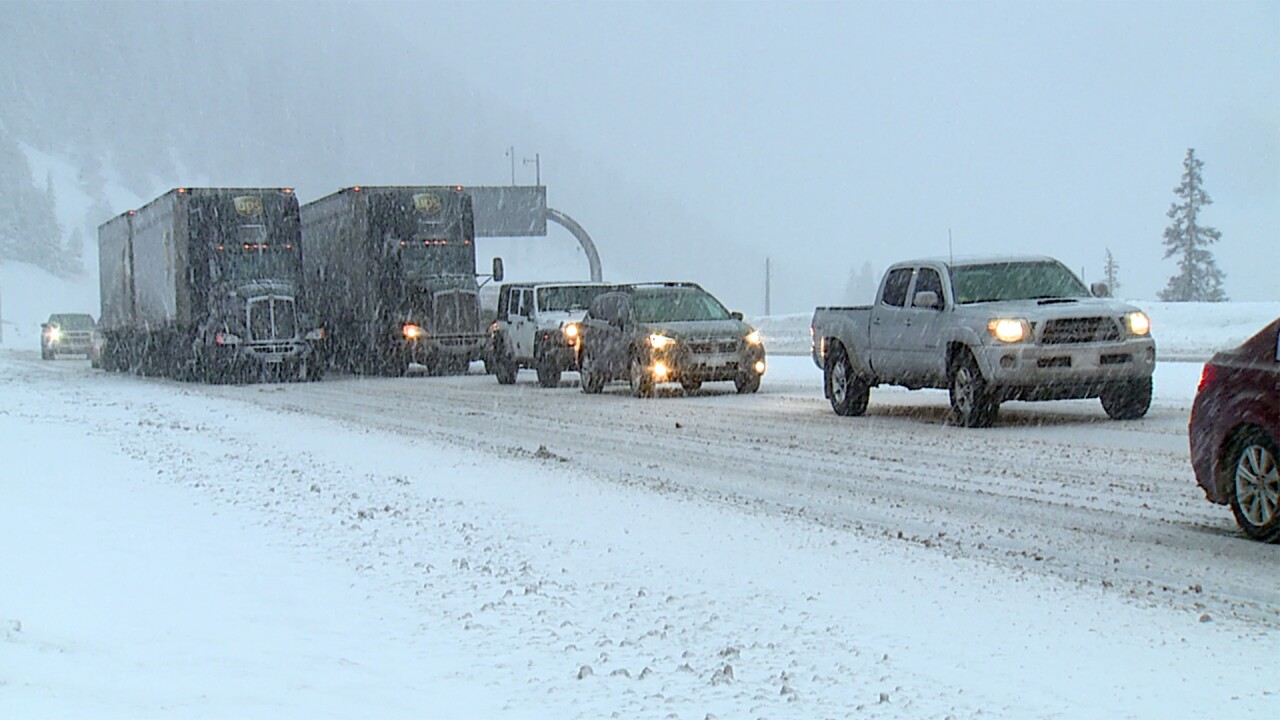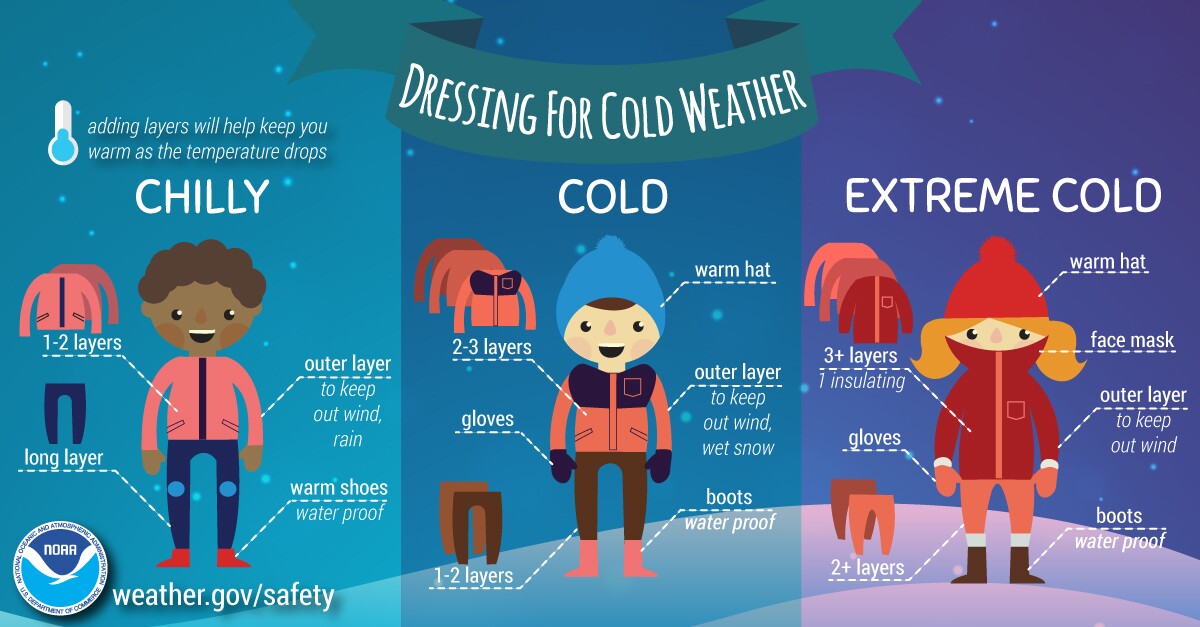As snowstorms roll across Colorado in the coming weeks and months, are you prepared for winter weather?
This week is Winter Weather Preparedness Week in Colorado and while the Denver area has yet to see any real snow, it's surely on its way in the next few weeks and months. Residents in the mountains have already seen several inches of snow in many areas.
So while things are still dry down here at lower elevations, now is a great opportunity to educate and prep yourself on everything you need to know, especially if you're new to the state.
Let's start with the basics
Throughout the winter (and sometimes also fall and spring), you'll see a variety of weather alerts ranging from watches to warnings to advisories.
Let's break down the National Weather Service terminology you need to know:
- Blizzard warning: Severe winter weather is expected in the next 12-36 hours or is currently happening. Avoid travel as much as possible. Whiteout conditions are likely happening.
- Winter storm warning: Dangerous winter weather is expected in the next 12-36 hours. Expect travel problems.
- Winter weather advisory: Potentially dangerous winter weather is expected in the next 12-36 hours. Expect travel problems.
- Winter storm watch: Winter storm conditions are possible in the next three days, but specific details about it are not yet solidified.
- Snow squall warning: A short burst of heavy snowfall and quick reduction in visibility and slick roads.
- Wind chill warning: Issued when wind chills of at least -25 degrees on the plains, and -35 degrees in the mountains and foothills are happening.
- Wind chill watch: When wind chill warning criteria is possible in next 12-36 hours.
- Wind chill advisory: Issued on the plains when wind and temperature combine to produce a wind chill of -18 degrees to -25 degrees, and issued in the mountains and foothills when wind and temperature combine to produce wind chill of -25 degrees.
- Freeze watch: Freeze conditions are possible in the next 12 to 36 hours.
- Freeze warning: Issued during the growing season when temperatures are expected to drop below 32 degrees.
- Frost advisory: Issued during the growing season when temperatures are expected to drop to between 32 and 35 degrees on clear calm nights
- High wind watch: High wind conditions are expected to develop in the next 12 to 36 hours.
- High wind warning: In the mountains, foothills and Front Range, this is used when there are sustained winds of 50 mph for at least one hour, or gusts up to 75 mph. At lower elevations, this is issued when there are sustained winds of 40 mph for at least one hour or gusts up to 58 mph.
Always check conditions before you head out somewhere by visiting CDOT's website or calling toll free 1-877-315-7623 or 511. And if conditions may worsen, let somebody know where you're headed just in case you lose cell service.

How do I winterize my car?
There are two parts to prepping your car for winter: First, make sure the vehicle itself is tuned up to keep you safe in winter conditions. And second, keep an emergency kit in your car in case you have to spend a lengthy amount of time inside.
Let's start with the car itself.
Tires are one of the most important parts of your car to check as soon as snow becomes a common occurrence.
In winter storms, the Colorado Department of Transportation will implement the Traction Law. It should be noted that this Traction Law is always in effect from Sept. 1 through May 31 on Interstate 70 from Dotsero to Morrison, per a law Gov. Jared Polis signed in 2019.
This means all drivers must have one of the following:
- 4WD or AWD vehicle and 3/16-inch tread depth
- Tires with a mud and snow designation (M+S icon) and 3/16-inch tread depth
- Winter tires (mountain-snowflake icon) and 3/16-inch tread depth
- Tires with an all-weather rating by the manufacturer and 3/16-inch tread depth
- Chains or an approved alternative traction device
Snow tires may not make the most financial sense for most driving conditions, especially at lower elevations. Dry, warm weather wears the tread on snow tires faster, and you'll encounter plenty of sun during Denver winters.
Your windshield wipers — in the front and back of the car — should be able to move snow without smudging it and blurring your view. They may need replacing, or may just need some TLC. To clean, use a paper towel and clean the rubber blades. You can also substitute a towel with sandpaper, just use it gently. Your mechanic can easily top off your wiper fluid if that's needed.
And what about your lights? Make sure all of them — from high beams to blinkers to brake lights — work as they should.
Lastly, ensure your brakes are good to go.
Before heading out the door, make sure you have a full tank of gasoline.

If you find yourself in the unfortunate position of spending hours in your car stuck in wintry conditions, your emergency kit will help you stay warm, fed, hydrated and safe.
Your kit should include a few basics like (unfrozen) water, food, ice scraper, a First Aid kid, flashlight and extra batteries, kitty litter or sand or safety absorbent (to help provide traction if you get stuck), blankets, jumper cables, cell phone chargers (may want an additional one from car charger), warm clothes (including hat and mittens) and anything else you think you may need to stay relatively comfortable in an emergency situation. This may also include a headlamp, book, cards or other ways to pass time.
A few companies, like AAA Colorado, sell packs like these in one unit if you'd rather skip the hassle of gathering these items.
Important note: If you're staying in your car for a bit, make sure your engine's exhaust pipe isn't blocked by snow or ice, as this can bring deadly levels of carbon monoxide into the car's cabin.
Never leave your car in bad weather if you become stranded. The only reason you should leave, unless help has arrived or poor conditions have cleared, is to tie a bright-colored cloth to an antenna, door handle or elsewhere outside the car to signal you're in distress.
Of course, the bottom line is if you don't want to risk dealing with all of this, avoid traveling during winter weather events.
What winter equipment do I need if I want to adventure outside?
The cardinal rule is that layers are your friend. It's much more comfortable to be a little warm and have the ability to discard a layer than to stay cold and wish you had more.
Aside from clothes, your wintry weather equipment is going to range greatly depending on what you're headed out to do.

For example: Are you cross-country skiing or snowshoeing? Skiing? Snowboarding? Hiking in icy conditions? Adventuring in the backcountry? Ice fishing? Ice climbing?
Aside from the equipment specific to those activities (i.e. snowshoes for snowshoeing, skis for skiing, etc. You get it.), here are a few things you may want to bring with you:
- Hand warmers and/or toe warmers
- Backpack
- SOS beacon (and whistle) in case you need help
- Microspikes
- Crampons
- Ice ax
- Physical map
- Portable phone charger
- Avalanche shovel, beacon and probe (plus training ahead of time — here are the Colorado Avalanche Information Center's educational courses on avalanche safety)
- Poles
- Sunscreen (yes, the sun is just as strong in the winter as the summer)
- Warm cloth around your neck, like a gaiter
- Water inside your pack, where it can stay relatively safe from freezing
- Goggles (for anywhere where you may experience blowing snow)
- Sunglasses (sun blindness can be a major problem)
- Snacks
- Bivy and items to get you through a night
- Change of clothes back at the car if you've worked up a sweat (bonus: leave coffee in a good thermos at the car and enjoy a warm drink after the adventure)
What are the warning signs that I need to head back indoors?
While it's a load of fun to explore Colorado's outdoors in the winter, it does come with its fair share of risks. Cold air combined with wind and snow can make for quite uncomfortable conditions in some situations.
This chart below from the National Weather Service can help you determine the threat of frostbite depending on wind chill.

To minimize the risk of frostbite, ensure all your skin is covered. If you suspect you have frostbite, hold the area closely against warm skin to help return blood flow and find a way to get indoors as soon as you can.
Hypothermia is another major concern and is the most common winter weather killer, according to NWS. This can occur even if it's 30 to 50 degrees. If your clothes are wet, this is an even bigger danger.
Signs of hypothermia include uncontrollable shivering, memory loss, disorientation, slurred speech and drowsiness, the NWS said. If you're with somebody experiencing these effects, warm the person up closely and try to seek immediate medical help.


